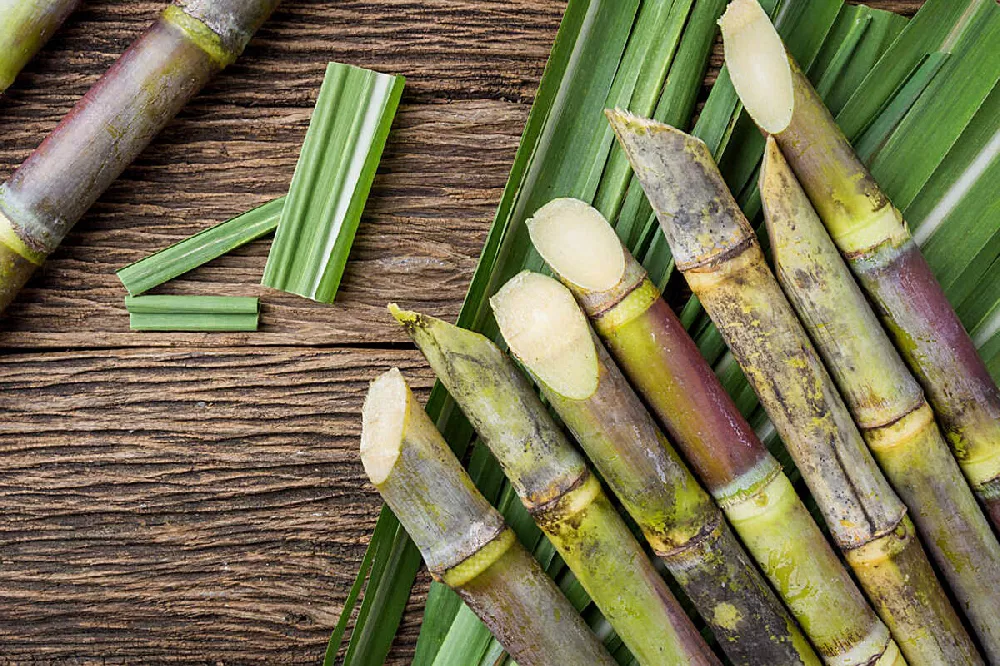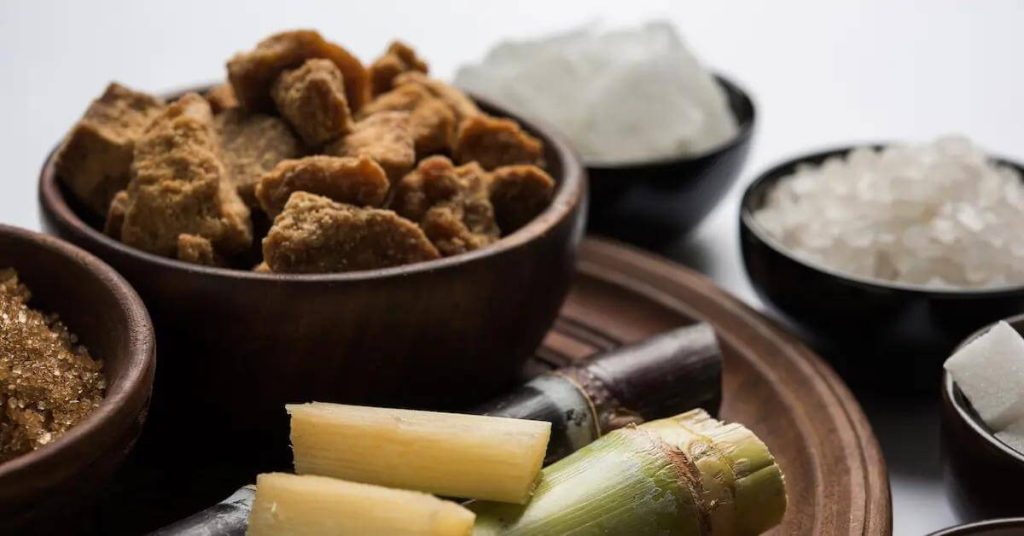An In-Depth Overview to the Ecological Effect and Sustainability Practices in Cane Sugar Processing
The environmental effect of cane sugar handling offers a complicated variety of difficulties that warrant cautious exam. From dirt degradation and excessive water use to the carbon impact connected with cultivation and manufacturing, the effects of typical methods are significant. In comparison, the fostering of innovative sustainability procedures offers a pathway toward extra liable production approaches. Understanding the interaction between these issues is important for stakeholders in the industry. What certain techniques can be carried out to strike a balance in between efficiency and ecological stewardship? The responses depend on a more detailed take a look at both the obstacles and potential options.
Overview of Walking Stick Sugar Processing
Walking stick sugar processing includes a series of methodical actions that transform sugarcane right into refined sugar. Initially, collected sugarcane is moved to processing facilities, where it undergoes cleansing to remove dirt and debris. Following this, the walking stick is squashed to extract juice, which is then made clear by eliminating impurities through heating and the enhancement of lime.
The clarified juice undertakes evaporation, where water is eliminated to concentrate the sugar content. These crystals are divided from the continuing to be syrup utilizing centrifugation, resulting in raw sugar.
The end product is then dried out and packaged for distribution. Throughout this whole procedure, maintaining efficiency and quality control is necessary to make sure the sugar meets industry standards. Each action in walking cane sugar handling not only adds to the last item however additionally has implications for resource usage and waste generation, establishing the stage for conversations on sustainability and environmental influences related to sugar manufacturing.
Environmental Challenges of Production
The production of walking cane sugar offers several significant ecological challenges that warrant interest. One key problem is the considerable use agrochemicals, including plant foods and pesticides, which can lead to dirt deterioration, biodiversity loss, and contamination of regional water sources. The drainage from sugarcane areas typically carries these chemicals into neighboring ecosystems, disrupting aquatic life and influencing the health and wellness of communities reliant on these water bodies.
One more challenge is the high power consumption linked with sugarcane processing. The boiling and refining stages need substantial warm, primarily created by burning fossil fuels, adding to greenhouse gas emissions. Additionally, the extensive land location required for sugarcane growing can lead to deforestation and habitat damage, additional worsening environment change and threatening wild animals.
Additionally, the labor techniques in some regions elevate moral problems, as workers may deal with poor working problems and insufficient incomes. This scenario typically continues a cycle of poverty in regional neighborhoods. Cane Sugar Processing. Attending to these ecological difficulties is vital for creating more sustainable methods in walking cane sugar manufacturing, eventually benefiting both the environment and the neighborhoods included in this sector
Water and Land Usage Influence
Water sources and land use are important parts in the walking cane sugar industry that considerably impact the setting. The cultivation of sugarcane needs significant water input, with price quotes recommending that it can consume as much as 2,000 liters of water per kg of sugar created. This intensive use water typically results in depletion of regional water sources, impacting not only the sugarcane ranches but also surrounding environments and neighborhoods that rely upon the very same water sources for farming and domestic use.

Additionally, land usage for sugarcane cultivation can result in logging and the conversion of natural habitats into monoculture haciendas. This method decreases biodiversity, interrupts neighborhood environments, and adds to dirt degradation. The expansion of sugarcane fields commonly trespasses on important agricultural land, developing competitors for resources between food and biofuel manufacturing.
Lasting techniques, such as maximizing irrigation methods and executing crop rotation, are essential to mitigate these influences. By embracing much more efficient water usage and land administration techniques, pop over to this site the cane sugar industry can reduce its ecological impact, guaranteeing a balance between farming performance and ecological preservation.
Greenhouse Gas Emissions
Greenhouse gas exhausts stand for a significant ecological issue within the walking stick sugar processing industry, particularly as agricultural techniques broaden to meet international need. The growing of sugarcane, a crop that grows in tropical climates, counts heavily on synthetic plant foods and chemicals, which add to nitrous oxide exhausts. Furthermore, land-use adjustments, consisting of logging for new sugarcane haciendas, release co2 stored in greenery and dirt.
During handling, energy consumption is another significant resource of greenhouse gas exhausts - Cane Sugar Processing. Several sugar mills utilize nonrenewable fuel sources to power equipment and produce heat, leading to significant carbon footprints. In addition, the transportation of raw sugarcane and completed items adds layers of discharges with gas burning in vehicles
The collective impact of these exhausts aggravates environment modification, posturing dangers not just to the atmosphere yet also to the long-lasting stability of the sector. Stakeholders should acknowledge the immediate requirement for detailed techniques that attend to these emissions. This includes evaluating current agricultural practices, refining methods, and transportation systems to identify locations for enhancement and reduction. Attending to greenhouse gas exhausts is crucial for cultivating an extra lasting cane sugar sector in a transforming climate.

Sustainable Practices and Innovations
Lasting techniques and innovations are significantly essential in the walking cane sugar handling industry as stakeholders seek to reduce ecological impacts while preserving performance. One considerable development is the application of integrated plant administration, which enhances resource use by integrating dirt administration, insect control, and plant turning strategies. This strategy improves yield while decreasing chemical inputs and preserving soil health.
Furthermore, the adoption of renewable resource resources, such as biomass from sugarcane deposits, has actually acquired grip - Cane Sugar Processing. By transforming waste products right into power, processing centers can minimize their dependence on nonrenewable fuel sources, thus decreasing greenhouse gas discharges
Water management methods have actually additionally seen visit this site renovations through the recycling and reusing of water in processing plants, considerably reducing freshwater intake. Technologies in modern technology, such as accuracy agriculture, allow farmers to monitor plant health and wellness and resource use more properly, ensuring lasting cultivation techniques.
Additionally, accreditation programs like Fair Profession and Jungle Alliance urge ecologically liable farming methods and advertise social equity within the supply chain. By welcoming these lasting methods and advancements, the walking stick sugar handling sector can improve its durability and add favorably to environmental stewardship.
Verdict
The ecological effect of cane sugar handling presents substantial difficulties, consisting of soil degradation, high water consumption, and greenhouse gas emissions, along with honest concerns More hints connected to labor methods. Resolving these issues through sustainable methods, such as incorporated plant management, renewable power adoption, and water recycling, is important. By advertising eco accountable and socially fair approaches in sugar production, the sector can reduce its negative impacts, ensuring a more sustainable future for both areas and communities included in this industry.
Cane sugar handling entails a series of organized actions that change sugarcane into polished sugar. Each step in cane sugar handling not just contributes to the final item however likewise has ramifications for source use and waste generation, establishing the stage for discussions on sustainability and ecological influences connected with sugar manufacturing.
Greenhouse gas discharges represent a considerable ecological concern within the cane sugar handling sector, specifically as farming methods broaden to fulfill international demand.Sustainable techniques and developments are significantly essential in the walking cane sugar processing market as stakeholders seek to minimize environmental influences while maintaining productivity.The ecological impact of cane sugar handling presents considerable obstacles, consisting of soil degradation, high water intake, and greenhouse gas emissions, along with ethical worries associated to labor methods.